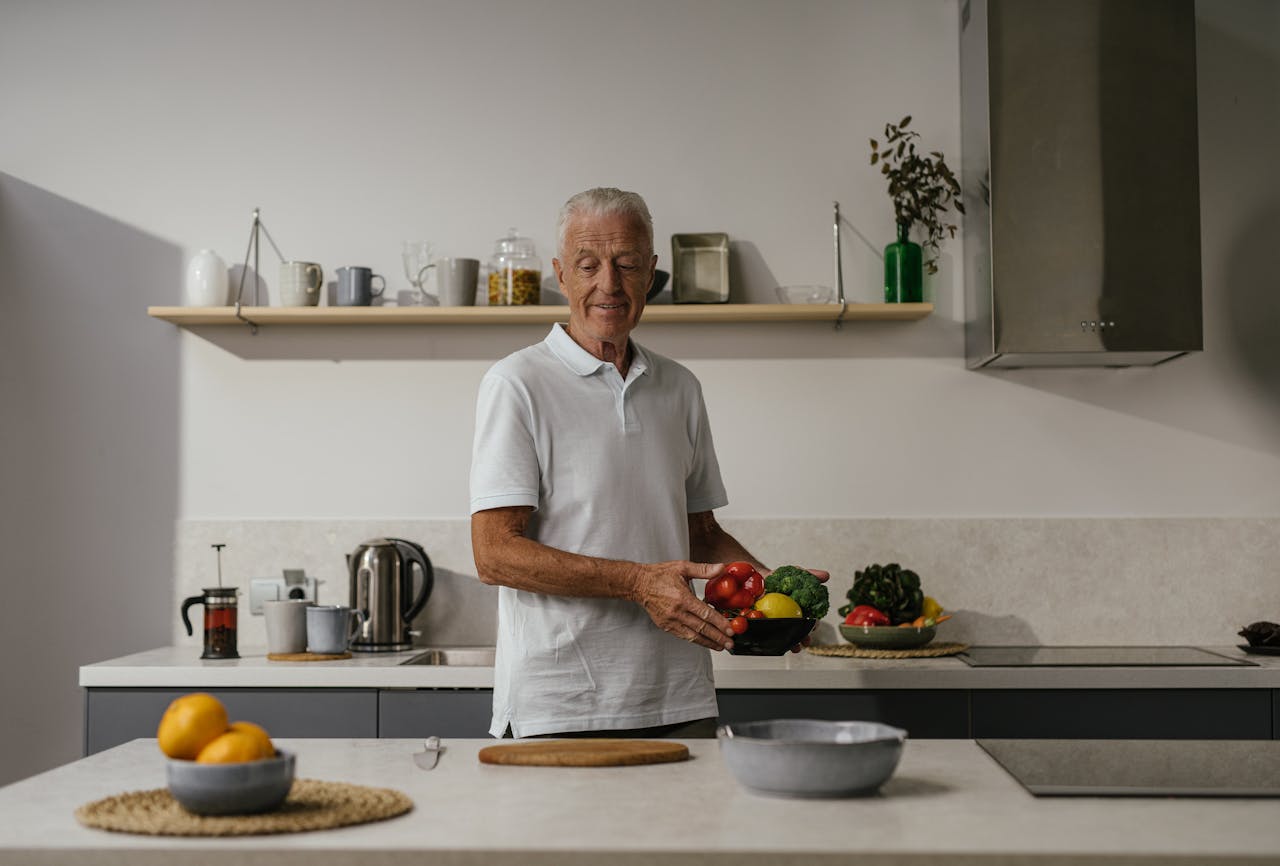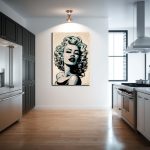While it’s a space for culinary creativity and family gatherings, the kitchen can also be a challenging area for older adults. With age comes physical changes, such as limited mobility and reduced eyesight, which can make traditional kitchens risky and inconvenient. Nonetheless, a few strategic design tweaks can transform your kitchen into an older adult-friendly space. This article explores ideas you can implement to make your kitchen safe, accessible, and comfortable for senior adults.
Optimise Your Kitchen Layout
Before you dive into small design changes, it’s crucial to take a step back and look at the big picture – your kitchen layout. A well-organised kitchen will promote safety and convenience. It’s about making the most out of your space.
Also read : Which UK appliances are best for making traditional British cuisine?
First, consider the ‘working triangle’ – the path between your fridge, sink, and cooker. This should be unobstructed, promoting easy movement and reducing the risk of accidents. If your current layout doesn’t lend itself to this, consider re-arranging your appliances or even remodelling your kitchen if feasible.
Next, account for enough floor space. This provides room for mobility aids, like walkers or wheelchairs, ensuring the kitchen is accessible. Wide doorways and open plans can also accommodate these aids.
In the same genre : Which UK appliances are best for making traditional British cuisine?
Finally, remember to keep frequently used items within easy reach. This will minimise the need for bending or reaching, which can be challenging for older adults.
Maximize Storage and Accessibility
Once your layout is optimised, dive into the specifics, starting with storage. For older adults, the best kitchens are those that make everyday tasks easy and do not exacerbate any physical discomfort.
Start with your cabinets. Consider installing pull-out shelves, which make it easier to reach items at the back. Lazy Susans in corner cabinets are also a clever solution. And don’t overlook the benefits of a pantry with roll-out shelves.
Next, think about the height of your storage. Wall cabinets should be at a level easily reachable. If you need to store items higher up, a lightweight step stool with a handle can be a handy addition to your kitchen.
Lastly, look at your drawers. Opt for easy-grip handles rather than knobs, and consider soft-close features to prevent sudden loud noises that can startle.
Incorporate Appropriate Lighting
Good lighting is often overlooked but can significantly improve the usability of a kitchen for senior adults. After all, our eyesight tends to diminish with age. Incorporating more lighting into your design can alleviate this issue.
Overhead lighting is a must, but also consider task lighting in key areas such as over the sink, stove and countertops. This will make food preparation safer and easier. Opt for LED lights, which are energy-efficient and long-lasting.
Natural light is also vital. If it’s possible, enlarge your windows or add a skylight. Else, mirrors and light paint can help reflect light and make the room brighter.
Choose the Right Flooring
Flooring is another crucial aspect of a senior-friendly kitchen. It plays a vital role in preventing slips and falls, which are common among older adults.
When choosing flooring, go for non-slip materials such as vinyl, linoleum, or cork. If you prefer tiles, opt for ones with a textured surface. Avoid high-gloss finishes, as these can be slippery when wet.
Also, consider the flooring colour. Contrasting colours can help delineate different areas, making navigation easier. A contrasting colour around the edge of the room can also provide a reference point for those with impaired vision.
Prioritise Safety Features
Finally, safety is paramount in any kitchen, but even more so in a kitchen designed for older adults. The addition of safety features will provide peace of mind and make your kitchen a safer space.
Start by installing a fire extinguisher and smoke detector. Also, consider an automatic stove shut-off system, which can prevent fires caused by unattended cooking.
Then, look at your countertops. Rounded edges are safer than sharp ones and can prevent injuries. Likewise, choose appliances with automatic shut-off features.
Don’t forget about the sink area. Lever taps are easier to use than knobs, especially for those with arthritis. A single-lever tap, which can control temperature and flow in one motion, is an excellent choice.
In conclusion, creating a senior-friendly kitchen is about making the space accessible, safe, and easy to use. With these design tips, you can ensure your kitchen serves you well in your golden years.
Install Assistive Technology and Appliances
The use of assistive technology and appliances can make your kitchen more accommodating for older adults. Devices designed to help seniors with daily tasks can make a massive difference in the usability of your kitchen space.
Firstly, consider installing automated or touchless faucets. These not only help older adults with limited mobility but can also add a modern touch to your kitchen design.
Next, when it comes to kitchen appliances, opt for those with easy-to-read, large buttons and dials. Keep in mind that some older people may struggle with intricate digital controls. Also, look for appliances with auto-off features for added safety.
Microwaves and ovens should be installed at a height accessible to seniors, preferably at eye level. This allows easy access and prevents accidents caused by reaching too high or bending too low.
Consider replacing traditional cooking hobs with induction cooktops. These heat up faster, are more energy-efficient, and pose less of a burn risk since they cool down quickly after use.
Lastly, install a dishwasher if you don’t already have one. Doing dishes by hand can be strenuous for seniors, especially those with arthritis or other physical ailments.
Smart technology can also be an essential feature to incorporate in your kitchen design. For example, voice-controlled devices – like Amazon’s Alexa or Google Home – can help seniors control various kitchen appliances without exerting physical effort.
Create a Comfortable and Restful Space
While functionality and safety are of utmost importance in a senior-friendly kitchen, comfort should not be overlooked. Older adults may tire more easily, and having a space to rest in the kitchen can be beneficial.
If you have the room, consider adding a small seating area in your kitchen. This could be a breakfast nook or a comfortable chair near the window. This way, older adults can take a break when they need to without leaving the kitchen.
An adjustable stool near the cooking area can be helpful for tasks that require standing for extended periods, like cooking or washing dishes. This can provide a spot to sit and rest during these tasks.
In terms of decor, opt for soothing and calm colours. Bright and overwhelming colours can cause visual confusion for older adults, especially those with cognitive impairment. Neutral shades like beige, white, or light blue can create a more relaxed and welcoming kitchen space.
Conclusion
Designing a senior-friendly kitchen doesn’t mean you have to compromise on style or aesthetics. By combining practicality, safety, and comfort, you can create a kitchen that is not only functional for older adults but also a space that everyone can enjoy.
From optimizing kitchen layouts and storage, choosing the right flooring and lighting, to installing assistive technology and appliances, and creating a comfortable space, there are plenty of ways to make your kitchen more senior-friendly.
Remember, the goal of these modifications is to enable older people to age in place safely and comfortably while maintaining their independence. With these tips, you can ensure that your kitchen serves as a safe, accessible, and pleasant space for all ages. No matter how big or small your kitchen is, making it senior-friendly is a worthwhile investment for the future.






